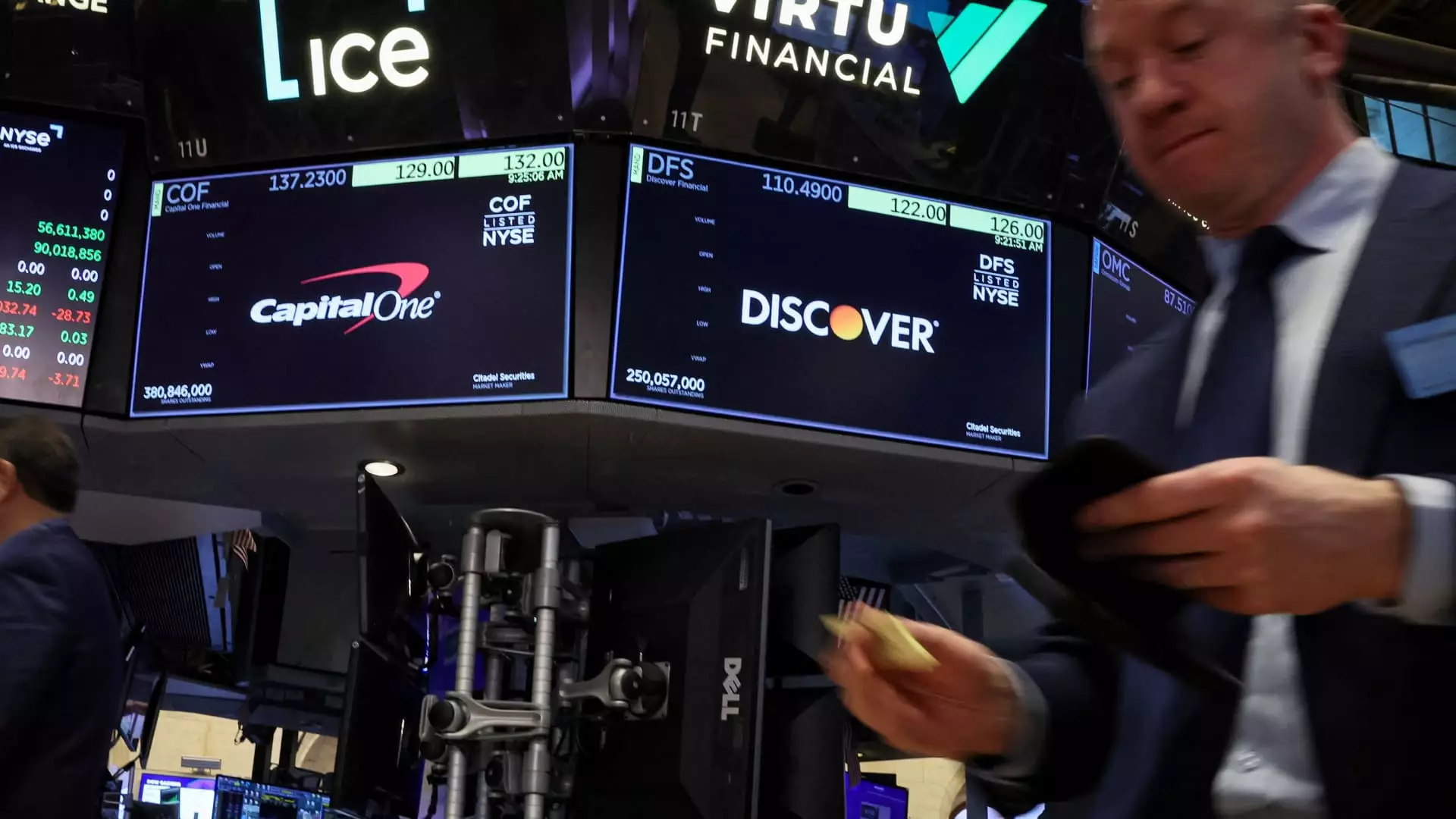On a day that could well become pivotal in the banking sector, Capital One has secured approvals for its $35 billion acquisition of Discover Financial, signaling a potentially transformative shift in the financial landscape. Analysts are gushing over the implications of this deal, which they predict will unleash a torrent of further mergers and acquisitions (M&A) in a climate that seems ripe for consolidation. The Federal Reserve and the Office of the Comptroller of the Currency have embraced a more accommodating regulatory stance under the current administration, and this trend could be the wind beneath the wings of ambitious banks yearning for growth through strategic partnerships and acquisitions.
While Capital One has boldly taken this leap, it poses broader questions about the regulatory environment and corporate growth strategies across the sector. Following the news, Wells Fargo research analysts heralded the merger as a “clearing event,” signaling a future where regulatory hurdles might lessen and propel further M&A activities. This bodes well for powerful players in the industry such as Goldman Sachs, which stand to gain not only from advisory services but also from an overall robust market.
Capital’s Game Plan: More Than Just Numbers
At its core, this merger isn’t just about numbers on paper; it’s about strategic alignment and expanding operational capabilities. Capital One has built its market reputation primarily on its credit card offerings, and acquiring Discover, another credit card powerhouse, could provide the company a diversified revenue stream that diminishes its heavy reliance on third-party payment processors like Visa and Mastercard. By doing so, Capital One isn’t just shielding itself from market volatilities; it is proactively positioning itself to thrive in an increasingly digital financial ecosystem.
Moreover, the timing of this acquisition raises questions about the sentiment in the market. While broader economic concerns loom, such as recession fears and ongoing trade conflicts, Capital One’s management seems unfazed, foreseeing brighter horizons filled with growth potential. Analysts at Wells Fargo argue that this acquisition provides “more than enough cushion” for the company against macroeconomic uncertainties. The careful planning and foresight displayed here underscore the strategic resilience that’s necessary in today’s ever-changing economic landscape.
The Investment Banking Landscape: A Balancing Act
However, this optimism isn’t universal across the investment landscape. The reality is that broader economic pressures are casting a shadow over market confidence. Although the approval of the Capital One-Discover deal suggests a loosening of regulatory strings, the anticipated boom in IPOs and significant M&A activity has yet to materialize, largely due to fears surrounding tariffs and an uncertain economic trajectory.
Goldman Sachs, despite having a storied history of executing successful deals, acknowledged that the current operating environment is not conducive to high earnings through its investment banking division. The sentiment following their recent earnings report has highlighted this struggle. CEO David Solomon remarked that corporate uncertainty is stifling decision-making from potential clients, further complicating the revitalization of the capital markets.
In light of this, it’s apparent that while bullish sentiment exists around already approved deals like that of Capital One’s, the underlying health of the market remains fragile. Therefore, despite the enthusiasm over the Capital One-Discover merger, the industry stands on a precarious precipice—a balancing act between optimism for growth and the weight of economic anxiety.
The Road Ahead: Regulatory Implications and Growth Opportunities
As the dust settles from the announcements, one can’t help but ponder what this acquisition means for the broader banking sector. A more lenient regulatory environment appears to favor large institutions looking to expand through acquisitions, but it raises questions about the implications for competition and consumer choice. Regulatory bodies must ensure that the competitive landscape remains vibrant, avoiding the pitfalls of monopolistic tendencies that could arise from a wave of consolidation.
Meanwhile, other financial institutions, such as Wells Fargo, share in the optimism as they press for reforms to regulatory caps limiting their growth. The compelling argument being made is that effective management has already rectified past misdeeds under previous leadership, warranting a lift of imposed restrictions to allow banks more operational freedom.
All of these elements weave a complex narrative about the future of banking in America. Capital One’s acquisition of Discover is more than a corporate maneuver; it is a bellwether moment that encapsulates the contour of the financial sector’s evolution as it navigates a comedown from an era of rapid growth and deals. The stakes are high, and the implications of this deal will likely reverberate across the economy for years to come. The question remains: will the favorable regulatory winds herald a new era of M&A or will they falter under the pressure of continued uncertainty?

